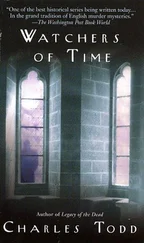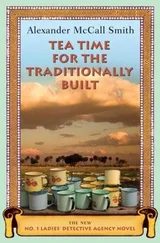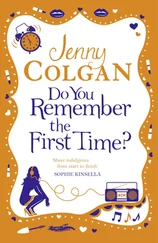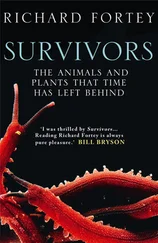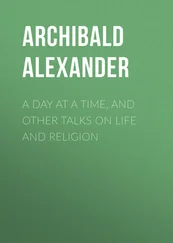Alexander Todd - A Time to Remember
Здесь есть возможность читать онлайн «Alexander Todd - A Time to Remember» весь текст электронной книги совершенно бесплатно (целиком полную версию без сокращений). В некоторых случаях можно слушать аудио, скачать через торрент в формате fb2 и присутствует краткое содержание. Город: Cambridge, Год выпуска: 1983, ISBN: 1983, Издательство: Cambridge University Press, Жанр: Химия, Биографии и Мемуары, на английском языке. Описание произведения, (предисловие) а так же отзывы посетителей доступны на портале библиотеки ЛибКат.
- Название:A Time to Remember
- Автор:
- Издательство:Cambridge University Press
- Жанр:
- Год:1983
- Город:Cambridge
- ISBN:0 521 25593 7
- Рейтинг книги:3 / 5. Голосов: 1
-
Избранное:Добавить в избранное
- Отзывы:
-
Ваша оценка:
- 60
- 1
- 2
- 3
- 4
- 5
A Time to Remember: краткое содержание, описание и аннотация
Предлагаем к чтению аннотацию, описание, краткое содержание или предисловие (зависит от того, что написал сам автор книги «A Time to Remember»). Если вы не нашли необходимую информацию о книге — напишите в комментариях, мы постараемся отыскать её.
A Time to Remember — читать онлайн бесплатно полную книгу (весь текст) целиком
Ниже представлен текст книги, разбитый по страницам. Система сохранения места последней прочитанной страницы, позволяет с удобством читать онлайн бесплатно книгу «A Time to Remember», без необходимости каждый раз заново искать на чём Вы остановились. Поставьте закладку, и сможете в любой момент перейти на страницу, на которой закончили чтение.
Интервал:
Закладка:
Among the large group of workers from overseas flooding into my laboratories in Cambridge once the war was over, was a remarkably able Canadian, S. F. MacDonald. He had spent some time with Hans Fischer in Munich, and was a porphyrin-chlorophyll expert doing excellent work in that field. He was a tremendous believer in the use of a hand spectroscope in studying the reactions of coloured compounds, and was immediately fascinated by my account of the aphid colours. A. W. Johnson too was strongly attracted, because I had already got him interested in some other aspects of insect chemistry. So the three of us got to work, and, with a growing band of research students - mainly from overseas - proceeded to unravel the complex puzzle of the aphid pigments. It soon became clear that we had, by so doing, moved into a very large field which absorbed a big effort in manpower for some twenty years. I do not propose to discuss the work in detail. Suffice to say that in general the living dark coloured aphids (red, brown and black) contain a yellowish protoaphin converted on the death of the insects by enzyme action to a yellow xanthoaphin; this latter is unstable and undergoes conversion in solution successively to an orange chrysoaphin and finally to a deep red erythroaphin. All of these compounds are complex quinones of a type not hitherto found in nature; they are not anthra-quinones. The green aphids - e.g. Macrosiphium rosae, the 'green fly' of cultivated roses - do not, contrary to popular assumption, contain any chlorophyll derivatives; they owe their colour to a green quinone related in structure to the aphins. It is of interest that the green fungus (Peziza aeruginosa) found on rotting wood also contains a green pigment (xylindein) not very dissimilar in type from that in the green aphids. Much of the later definitive work on the structure of these pigments was carried out in the 1960s, my chief colleague in that phase being D. A. Cameron, now Professor of Organic Chemistry in Melbourne who is still carrying on work in this field (although aphids are not a common pest in Australia, which suffers more from the depredations of coccids!). I never thought when I began work with aphids that it would turn out to be such a monumental undertaking, but it did give a great deal of interest, and my final satisfaction came just about twenty years after I began it, when my young colleague Jonathan Banks established that the colouring matters are indeed produced in the mycetomes of the insects, i.e. they are probably of fungal origin. It would be nice to check the situation in the cochineal insects, and in the lac insects cultivated commercially in India; my guess is that their colouring matters also originate in their fungal symbionts.
The researches on the aphid pigments had their lighter side. If one wanted to get hold of the protoaphins, the insects had to be alive and undamaged; death or injury seemed to liberate an enzyme which at once set in train the series of changes leading to erythroaphins. In the case of Aphis fabae, the 'black fly' of cultivated beans (to get them we used to search for a badly infested field, and then pay the farmer to let us cut off the tops of infected plants) we used to place the aphid-infested bean-tops on horizontal shelves in dustbins laid on their side, with a piece of butter muslin stretched across the open end instead of the lid. We then placed a bright light in front of this peculiar piece of equipment; the insects, being phototropic, thereupon withdrew their probosces from the bean plants, walked on to the butter muslin and, hey presto! we had a supply of live undamaged insects. In the case of such insects as the willow aphid Tuberolachnus salignus, which lives on twigs and branches rather than on leaves, we had another technique. Aphids, although they can walk quite happily on paper, are completely unable to do so on cellophane; we therefore used to put sloping cellophane sheets under infested twigs then tapped the latter gently. This apparently annoyed the aphids who pulled out their probosces whereupon they fell on to the cellophane and were duly collected. My wife has vivid memories of the early summer of 1948 when we had a heavy infestation of the cherry aphid (Myzus cerasi) on a double row of ornamental cherry trees bordering the avenue outside our house. The infestation coincided with the first visit of an Australian cricket side to England after the war. As it happened the gang of research students whom I sent out to climb and 'delouse' the trees were Australians; I understand that they used to descend from their perch in the trees every half-hour or so, to have some tea and keep up with the Test match on the radio! For the aphid work we needed very large amounts of insects, and so used to collect them by the kilogram. In a poor aphid year we sometimes had a good deal of difficulty in getting particular species. I recall that in one year we put an advertisement in the local newspaper asking people to let us know if they came across aphid infestations, so that we could collect the insects. We only did it once; no-one gave us any information, but we had a flood of envelopes from helpful people enclosing a leaf with two or three aphids on it, and about twice as many crawling all over the outside of the envelope. I don't think the postal authorities thought much of the result either.
6. The post-war years. Involvement in science policy and international activities
As far as we in Cambridge were concerned, the war effectively ended with the collapse of Germany in May 1945. True, the struggle with Japan continued, but it was rather remote from us. Although air-raids from Germany had ceased, we were, until the end of the war in Europe, subject to the continued threat of flying bombs and the more dangerous rocket-propelled V-2s. With that menace removed, we seemed effectively at peace, although all or most of our wartime restrictions continued and life was certainly austere. In the autumn of 1945 I received an invitation from the Swiss Chemical Society to visit Switzerland in early December, and lecture in Zurich and Basle on my researches on Cannabis. This was my first trip abroad since the outbreak of war, and I was very excited about it. I reported at Northolt airport on a bitterly cold morning to fly in a Swissair DC-3 to Zurich. Fog delayed our departure for an hour or two, much to the pilot's concern - he was clearly afraid that if he didn't get to Zurich before dark he might not be able to land there. However, we finally took off, and when we arrived over Zurich it was already dark but clear and frosty. Looking down from the plane on a city blazing with lights and flashing advertisements, I could hardly believe it - so accustomed had we become to the gloom of the blackout in Britain. Once landed, the shock was even greater. I find it hard to express my feelings at seeing again well-lit streets and shops, with glittering snow all around - there were sweet stalls, and you could even buy bananas in the greengrocers' shops! I had almost forgotten what the world had been like before 1939! But it was a magnificent feeling — this was peace, and soon all Europe would be like this again (although, in fact, it was to take longer than I expected). It was a most successful visit; my lectures went well, and I was able to renew my contacts with Professors Reichstein, Ruzicka and Karrer. I also, of course, made touch with my old research colleagues from London and Manchester - Marguerite Steiger now running her family's pharmaceutical business in Zurich, and Hans Waldmann with Hoffmann La Roche in Basle. I also renewed acquaintance with two old Oxford friends - Emil Schlittler and Rudolf Morf; the latter I was to see much of in later years through our joint concern with the International Union of Pure and Applied Chemistry, of which he became Secretary General in 1955 in succession to Professor Delaby of Paris.
Читать дальшеИнтервал:
Закладка:
Похожие книги на «A Time to Remember»
Представляем Вашему вниманию похожие книги на «A Time to Remember» списком для выбора. Мы отобрали схожую по названию и смыслу литературу в надежде предоставить читателям больше вариантов отыскать новые, интересные, ещё непрочитанные произведения.
Обсуждение, отзывы о книге «A Time to Remember» и просто собственные мнения читателей. Оставьте ваши комментарии, напишите, что Вы думаете о произведении, его смысле или главных героях. Укажите что конкретно понравилось, а что нет, и почему Вы так считаете.

